Summer is glancing at the door, but it’s not quite fall. Streams are running low and bugs are flying—big ones that can be imitated with slabs of foam and deer hair. It’s the height of terrestrial season in much of the country, and, along with pre-spawn windows and high water events, when big bugs fly, anglers have a strong chance of tangling with big trout.
These windows of opportunity exist—and are targeted by anglers—because the ambient environmental circumstances create strong, targetable big fish patterns in much the same way that dropping barometric pressure and low light do. But there is more to hunting big fish than the mood and behavior of the fish, themselves. Big fish are keen and powerful animals. There’s a big difference between hooking and catching such a beast.
Often, an angler goes to great lengths to hook a big, wary fish, only to be caught unprepared when the fish executes evasive maneuvers. The fish is either lost immediately or after several tense moments of reactive fish fighting, and the sudden excitement and fulfillment that comes with the hookup turns to bitter pain and emptiness. Dignity and spirit, if not fly or entire rig, is lost, on top of the fish. Then comes the process of retying and getting back after it.
Most all who have danced with big fish know this walk of shame, and that it should be avoided at all costs. There is no sure-fire cure, but the best solution is a tactical approach and a preemptive analysis of the scene and possible ways a battle could transpire. Here are a few things to consider.
Rod Action
Though it may seem superficially insignificant, rod action plays a strong role in fish fighting. Your rod is your weapon in the fight, and its action will determine how much pressure you’re capable of placing on the fish and how efficiently you can exert pressure without breaking your tippet.
For doing battle with large trout, I favor rods with a moderate action—those that flex into the mid-section, yet have enough power in the mid- and butt-sections to lean on big fish. Large trout are long, and are capable of wide, sweat-spawning head shakes. This is when many fish are broken off. When engaged (read, bent) on a fish, a flexible rod tip acts as a spring to absorb shock, which helps with tippet protection and with keeping hooks in fish mouths. But remember that your power is in the mid- and butt-sections, not the tip. To move a fish, keep the tip bent, and engage the lower portion of the rod with side pressure from a low angle.
Identify Challenges and Obstacles
Generally, challenges and obstacles that present themselves during a fight come in two forms—heavy current and snags.
Heavy current gives fish the advantage because, when they move downstream, the current compounds their weight and strength, often resulting in break-offs. The only way to steal this advantage is by either earning a downstream angle on the fish by getting below it, or by quickly coercing the fish into slack, or slower moving current.
Regardless of how the fight does play out, heavy current can be an obstacle if moving downstream from the casting position is difficult to do quickly or at all. Consider this before making the cast. If getting downstream with a big fish isn’t easily done, consider a different casting position. If it is, know your route, and safely execute it once the fish is hooked.
Snags are a bit more obvious of a challenge. Rocks, wood, and other in-stream structures can abrade tippet, cause slack, and facilitate lost fish. Scan the scene for these hazards and visualize what would need to happen should a fish head for cover.
Strong side pressure in the direction the fish is heading is the most efficient way of steering a fish. Often times, overhanging branches don’t dip below the water’s surface, but can still tangle fly line and threaten slack if a fish runs underneath them on a high rod angle. In this case, don’t shy away from sticking your rod tip in the water. Conversely, in fishing rough pocket water with large boulders and crevices, or areas with a sharp bedrock bottom or mid-column logs, upward pressure might be needed to keep the fish buttoned.
Have a Landing Location Goal
Taking into account the challenges and obstacles presented, you should have, before the hook is set, a goal for where you’d like to land the fish. If on foot, typically, this will be a piece of relatively shallow, soft water along the bank free of obstructions—a place where the fish has no imminent advantage.
Keeping this goal in mind throughout the battle will guide your actions and help to move the fish into a neutral position as quickly as possible.
Hook Set Direction
Big fish often inhabit some tough-to-present-to lies, particularly in places like southwest Virginia, where I fish and guide, where the streams are small and tree cover is heavy. When a big fish is spotted or presumed to be finning such a spot, consider how setting the hook will have to happen in order to successfully hook the fish and transition smoothly into the fight.
In almost every situation, a downstream hookset is optimal, as the fish will likely be moving upstream to take your fly. If overhead branches threaten to interfere with a high hookset, a horizontal hookset might be necessary.
Too many times, I’ve seen anglers work hard to get a fly in front of a fish, and, despite having thought through the required hookset angle preemptively, upon getting the eat, their instinct takes over, and the hookset sends the rod sweeping vertically into an overhead tree limb, which results in a poor hookset, a potentially damaged rod, and a rod tip pointed at a writhing, hooked fish. Break offs typically follow. To fend off this instinct, I find it useful to anticipate the eat on every cast, and lead the fly with the rod tip in the direction that you need to set the hook.
Remember Grace
Big fish are hard to handle. It’s part of what makes them so coveted and elusive. When, at some point during your fishing career, you lose a big fish—and you will—laugh it off. Remember grace. It happens to everyone, and no one likes an angry angler.
Targeting big fish is a game of odds, and every one that you can stack in your corner will improve the likelihood of successfully landing one. Being mentally prepared to fight a fish proactively, instead of reactively, is just as important as being in the right place at the right time. Don’t neglect it.




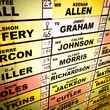
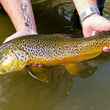















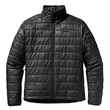




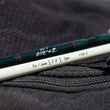

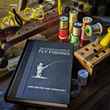
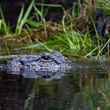
Comments
Pat Okonek replied on Permalink
Sound advice. Regularly check your fly knot for weakness and your leader for wind knots. You'll lose fewer fish overall as and maximize the effectiveness of the techniques described in this piece.
Pages